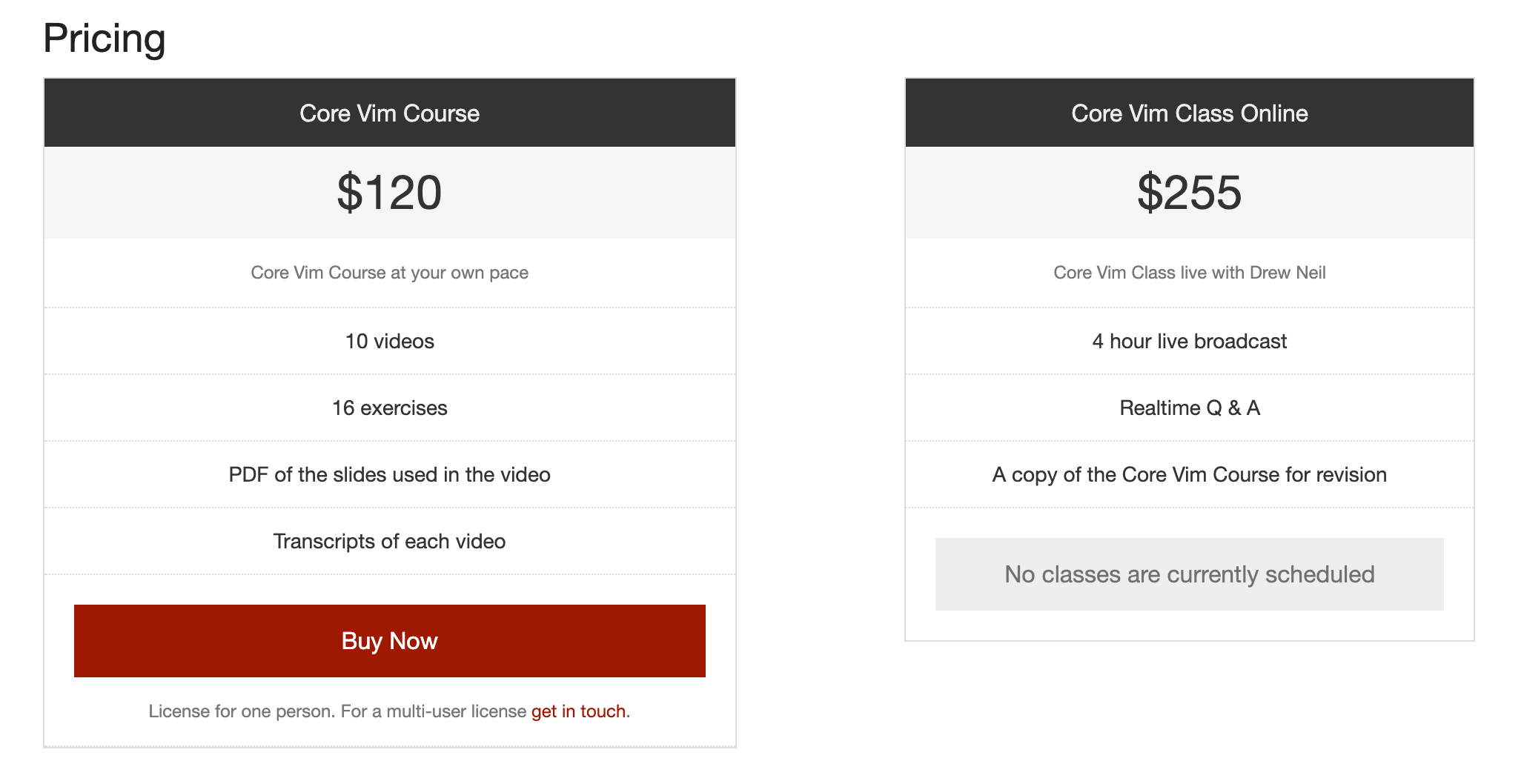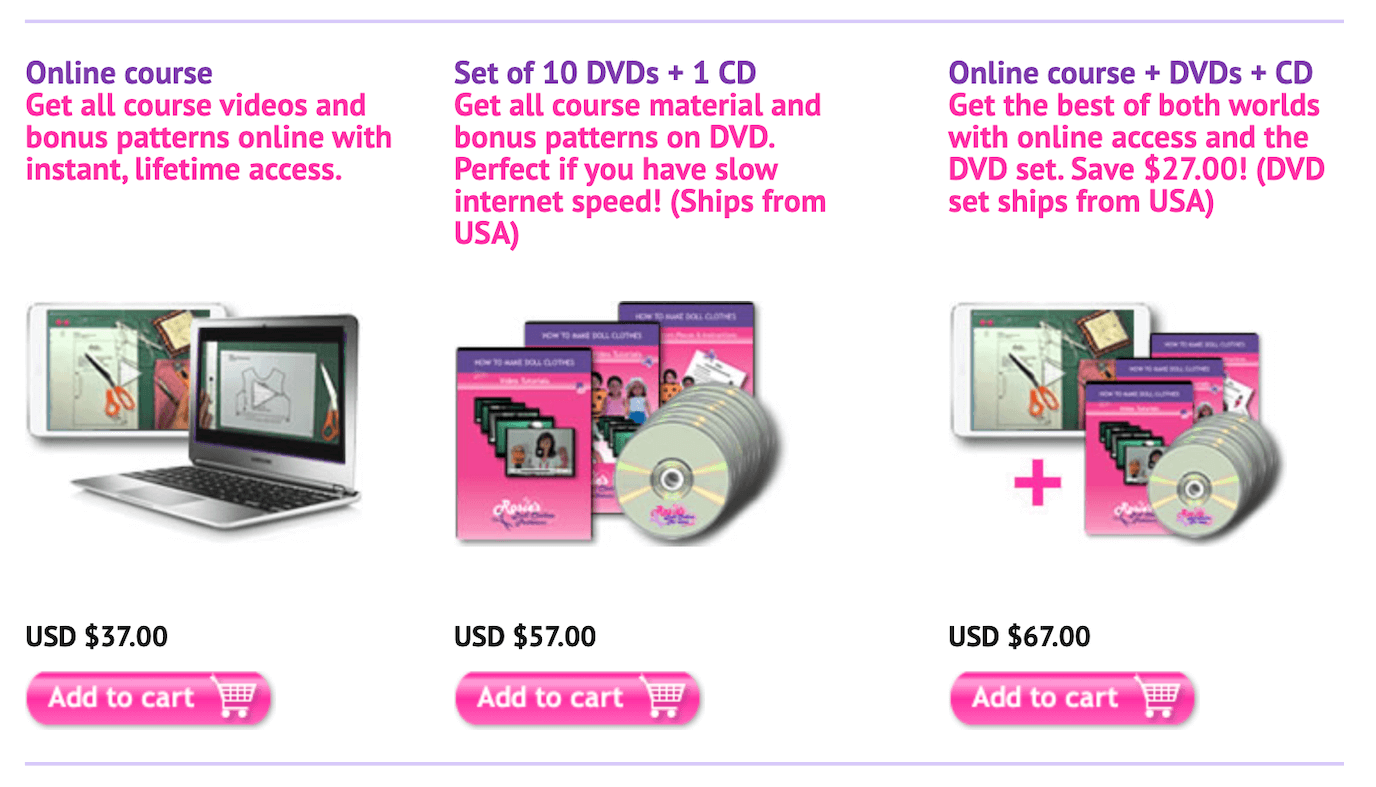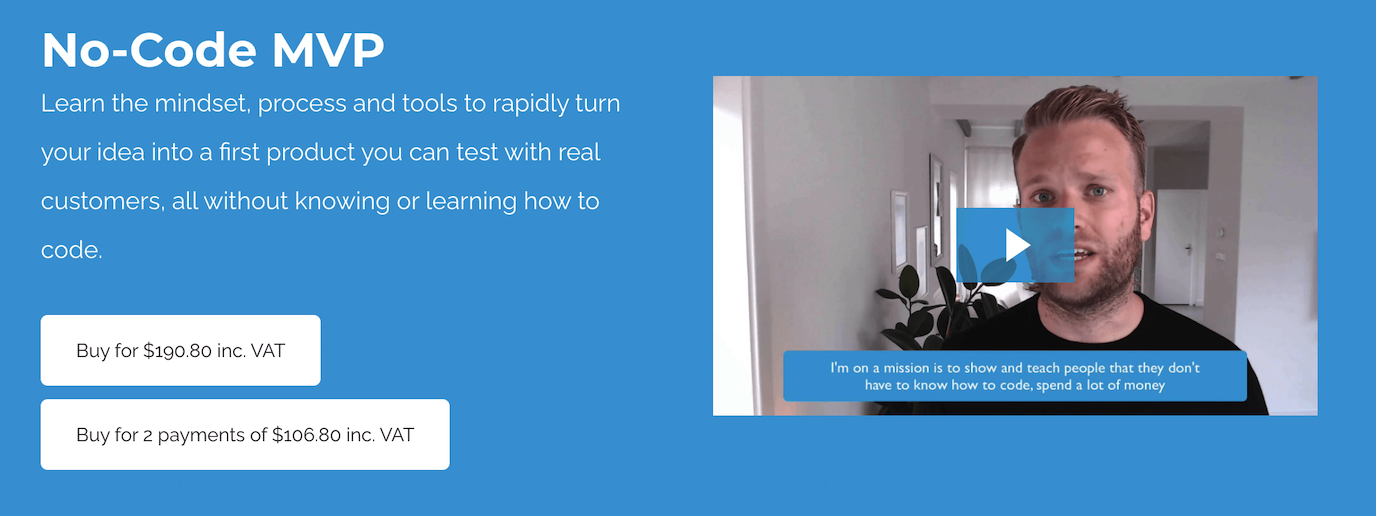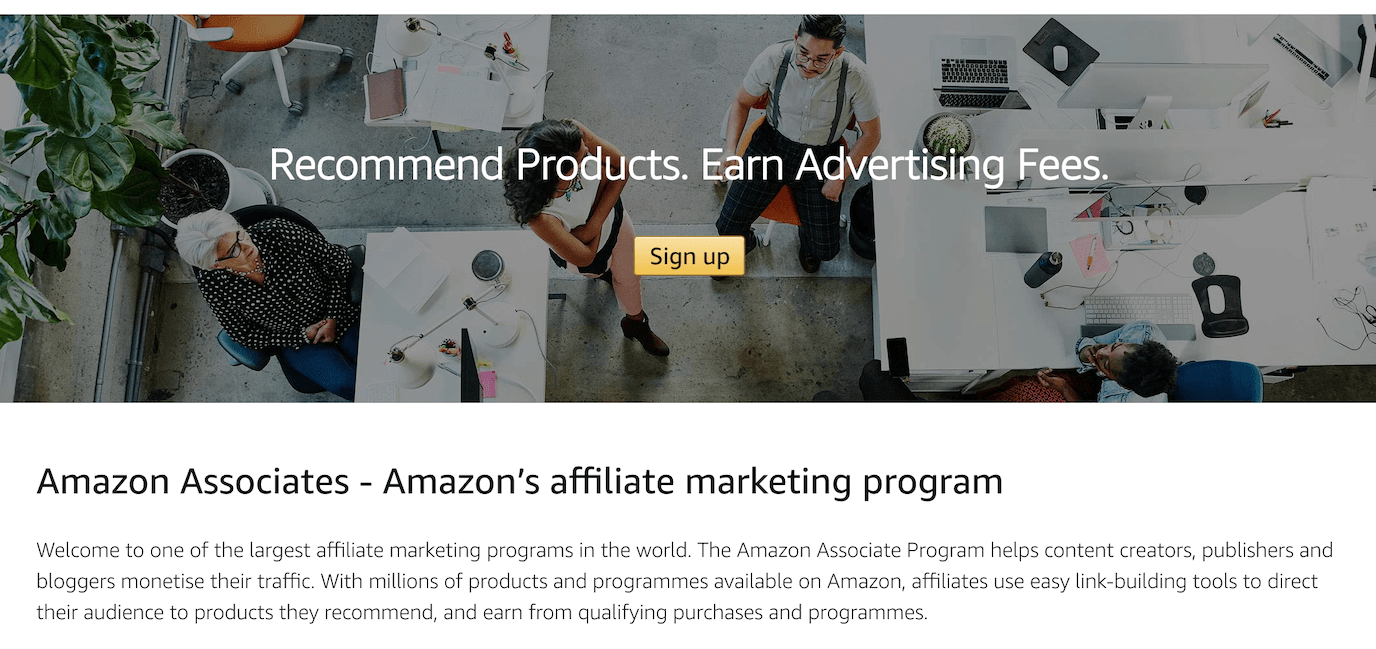You’ve probably already thought about how you should price your online course. It’s an important and sometimes stressful decision. Sadly, there is no ‘magic formula’ that will work for everyone!
However, in this article we look at tips that will help you decide on a suitable price. We then look at pricing tactics that can help you sell more, no matter what actual price you decide on for your course.
- Pricing basics
- Pricing case study
- What to do instead of worrying about how to price your course
- What next?
Pricing basics
To get a clear idea of what price is suitable for your online course, begin by answering these questions:
- Are you (or your organisation) an established authority or still building your following?
- Are you solving a major problem that will make a huge difference to someone, like a professional qualification, or offering people the chance to acquire a ‘nice to have but not essential’ new skill?
- How much have you spent creating the course?
- How much you do you need to spend marketing the course?
- How do your competitors price their course (you don’t have to undercut their pricing but you do need to show why your course is higher value)?
- Do you need to cover support costs for students, or will they self-service?
Your answers should help steer you towards a suitable price. Resist the temptation to under-sell yourself, particularly if this is your first online course. Pricing your course too cheaply can make people value your course less and underestimate its quality.
As a starting point, online course creator Podia looked at data from more than 133,000 course sales to see how creators priced their courses. They discovered that although the average price was $182.59, the median price was $76.50. They concluded that there is no industry standard for pricing.
Online course pricing case study
Look at this online course by Drew Neil, creator of Vimcasts. The price is $120 for the self-study course.
Why is this price suitable?
- Drew was already fairly established as a Vim authority when he created this course
- Vim is a very useful tool for web developers but has a steep learning curve. Drew can help students save a lot of time trying to level up their skills.
- Drew was used to producing screencasts so got the course together fairly quickly
- Drew already had a popular website so his marketing costs were fairly low
- There was limited competition
- Students required little support, largely because Drew anticipated and then answered potential questions within the course itself
Drew could afford to price competitively because his course creation, running and marketing costs were fairly low. However, he could easily charge over $100 because he didn’t have much competition, he solved a major problem for his audience, and he was already well known as a Vim authority. He also offers a ‘live’ online course at a higher price point.

Get early-stage feedback from your students
One of the best tests of whether you’ve got your pricing right is whether your students buy the course. If your price is too high then you’ll get very few sales. If your price is too low, you’ll get more sales than expected but at a lower profit margin.
It can be hard to change your price once you’ve launched it in a very publicly fashion though. For this reason, you could consider a ‘soft launch’ of your course. This is when you promote your course to a select number of people on your mailing list, for example. This way you can test your course pricing and content before doubling-down on your marketing efforts.
Also, ask your initial students for feedback on your course. It’s great to know they are willing to buy it. However, other types of feedback can give you a valuable steer on whether your pricing is suitable. If you are getting rave reviews them perhaps you should price higher? If your feedback is more mixed then you’re faced with the choice of improving your course or tweaking your price.
To get early stage feedback on your online course, you have a few choices:
- Use a simple website feedback tool, like Saber Feedback, to get private feedback
- Use an ideas board like Feature Upvote, or public groups on Facebook or Slack, to get group feedback
- Arrange student interviews or a webinar
- Teach your course face-to-face to a few students, or via Zoom
What to do instead of worrying about how to price your course
There are other tactics aside from price that can help you sell more courses. Now you’ve finished your online course, consider whether these might work for you.
Pricing packages
To sell more of your course offer pricing packages. These could include:
- Premium add-ons like access to a membership forum or select access to certain content
- Different formats for your online course
- Create free (or inexpensive) mini-courses for students who are willing to make some investment in terms of time and money
- Create a course which is actually taught by you at a significantly higher price point
Pricing packages can make your core course seem like better value, and tempt less decisive students to give you some commitment in terms of time and money that results in an upsell later on.
They can also reassure customers who are concerned about doing everything online. This example is from ‘How to Make Doll Clothes Online Sewing Course’. Although the pricing for the online course is clear, the course author also offers different course formats for people with slow internet connections. The higher price for the DVD/CD options, also make her online-only course look like good value.

Flexible payment options
Rather than asking for full payment up front, experiment with different pricing options.
- Give students the option of paying less as a one-off payment or slightly more over two or three separate payments
- Charge a minimum up-front contribution and then have a ‘pay what you want’ option when students have finished your course
- Give students a chance to pay less if they do something – like give you a feedback interview or refer a friend
In this example from No Code MVP, students can pay a cheaper price upfront, or a slightly more expensive price over two instalments.

Affiliate scheme
Affiliate schemes involve agreeing to pay affiliates a percentage of sales, so the more products they help you sell, the more money they earn.
They are routinely used by larger companies, including Amazon. That’s no reason why they won’t work for you though.

An affiliate scheme gives you access to the audience of other people, and can be a really effective way to make sales and increase your market share. The margin on these sales is lower than direct sales you make, but you’ll making sales you wouldn’t normally have made.
However, your success will depend on a few factors:
- Only use affiliates whose values align with yours and that won’t spam your product all over the internet
- Choose affiliates who have an audience that will be genuinely interested in your course
- Share your best content with your affiliates so you set them up for success
- Expect to spend time actively managing your affiliates, as you would franchisees
How you set up an affiliate scheme depends on your tech stack. WordPress has a number of affiliate scheme plugins, including AffiliateWP, while ecommerce platform Shopify supports affiliates, as does digital delivery platform SendOwl.
Discounts
Discounts can make your course seem like better value and persuade people they are getting a bargain. This only works if you actually sell your course for the ‘normal’ price for a decent period of time. There’s nothing more irritating than to be told you are getting a lower price only to find out that this supposed deal is actually available 99% of the time!
Exceptions could be Black Friday, for example, when it’s common practice to slash prices for a set period of time. Or it’s understandable at the moment that some retailers are offering discounts to try and combat falling sales due to Covid-19.
If you have more than one digital product, you could also offer a substantial discount for your other product. This is a clever way to upsell your customers. In this example, Coastal Drone offer a 50% discount on their Aerial photography and videography course when you purchase their advanced pilot course.

What next?
Congratulations! You’ve created your course and decided on a price so what do you do next?
We suggest you improve your course so you sell more. Get early stage feedback, do a course content audit and use new insights to optimise your marketing.

